A paddle steamer in use since 1856
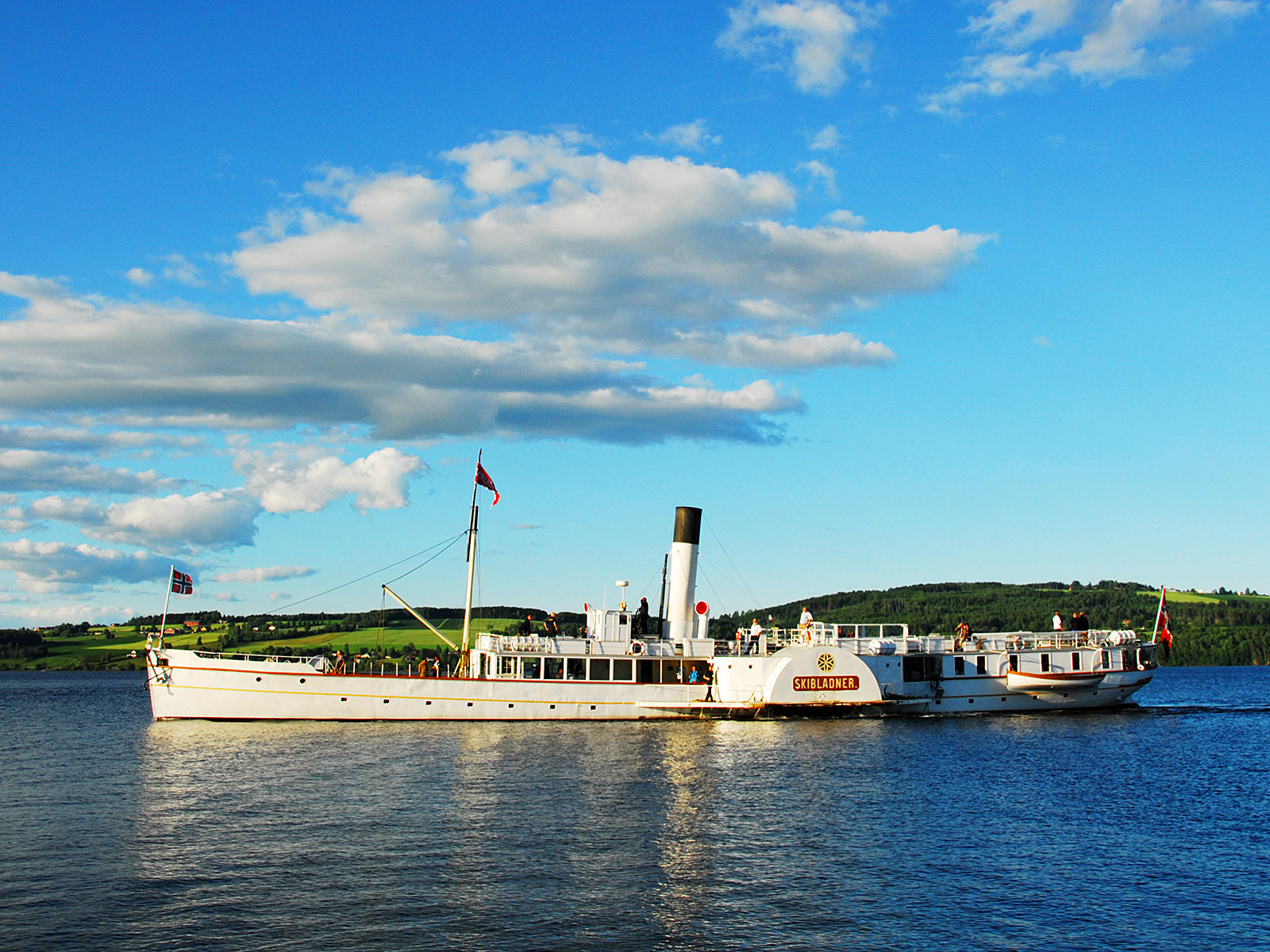
"Skibladner" coming in for docking in Gjøvik, the town on the west side of the lake Mjøsa, our largest lake, situated north of the capital, Oslo. This is the day's last docking, so there is no smoke from the funnel.
(2010-07-18)
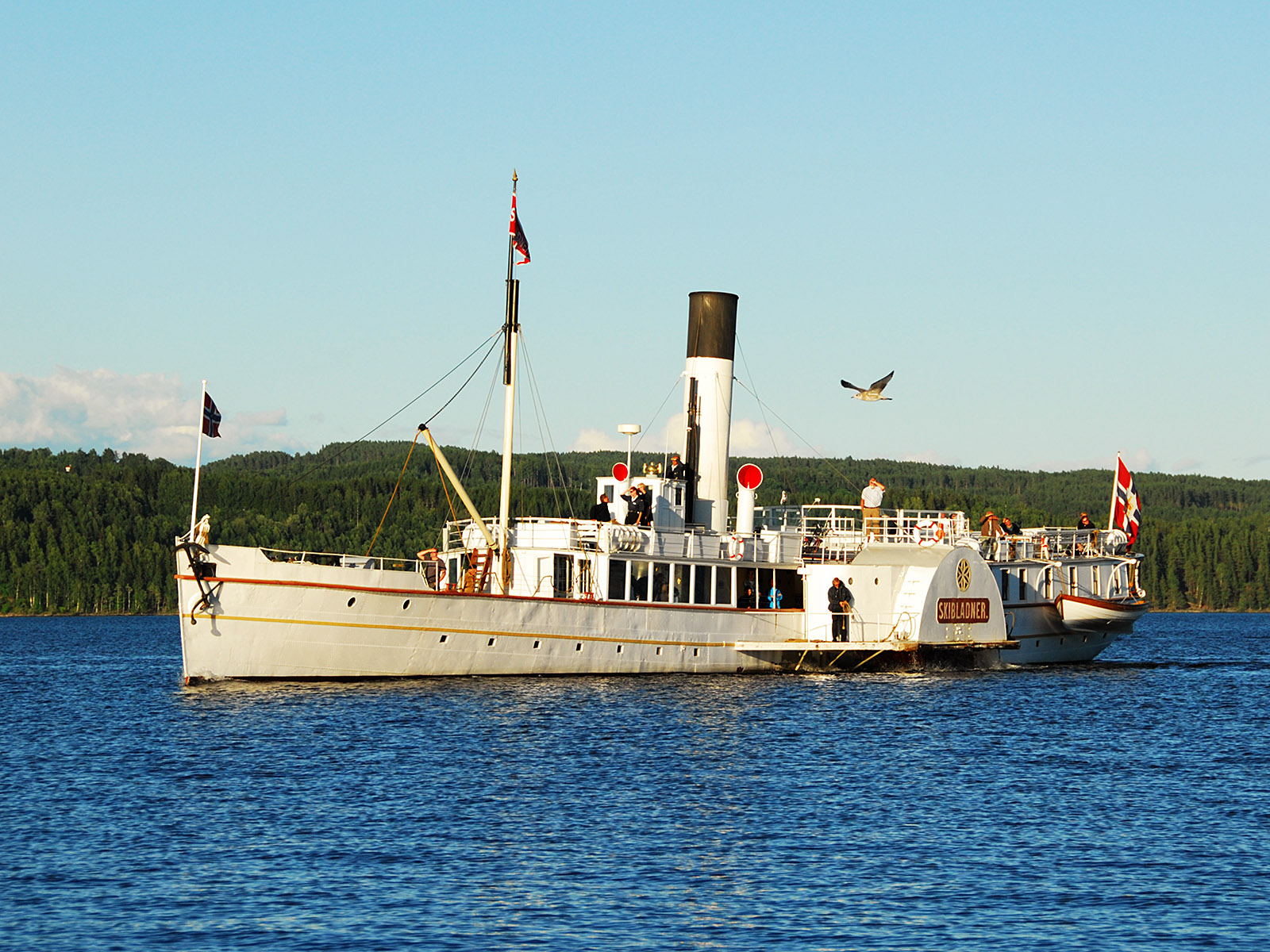
In 1854 the first railway in Norway was opened between Oslo and Eidsvoll. To bring passengers, mail, and goods further to Hamar and Lillehammer, the paddle steamer "Skibladner" was launched in 1856. When the railroad had reached Lillehammer (actually Tretten, nearly 30 km further north) in 1894, "Skibladner" continued on the route Eidsvoll–Lillehammer with intermediate stops. There has been several changes through the years, and "Skibladner" has been used more and more for pleasure trips. The lake Mjøsa, and sometimes its river outlet, Vorma, freezes over during the winter, so "Skibladner" can only sail during the summer.
"The white swan of Mjøsa" she is called, but the original colour was green and pink. She got her present colours in 1888, when she was also lengthened by 20 feet and got one smokestack instead of two. In 1920 coal heating of the boiler was replaced by oil.
(2010-07-18)
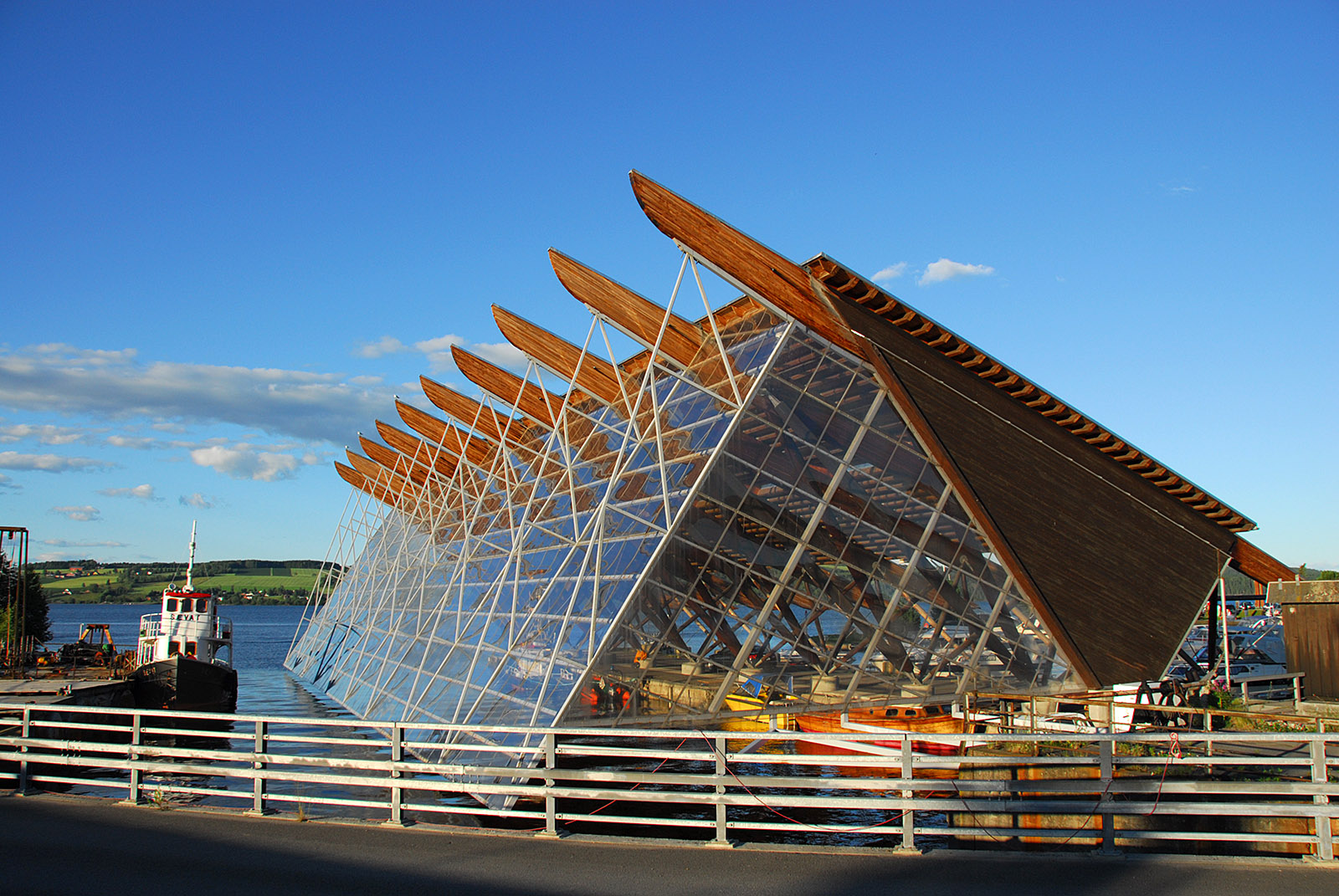
In 2001 "Skibladner" got a shelter to protect her during the winter. It was built in Gjøvik on the west side of Mjøsa and that has since been her home.
(2010-07-18)
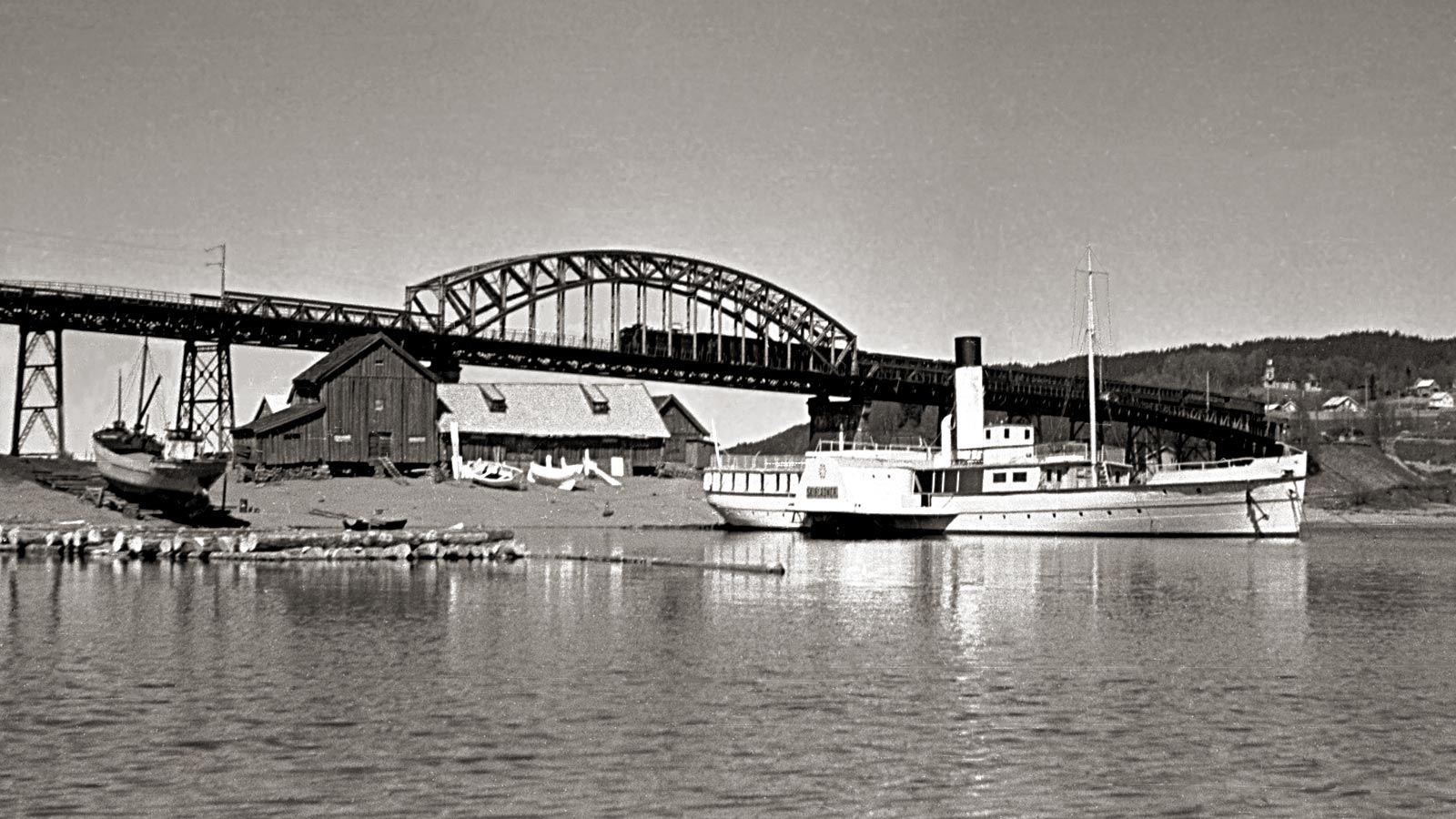
This is Minnesund, the outlet of the lake Mjøsa, as it looked in 1954. When the ship docks at the Eidsvoll railroad station, it's about eight kilometres down the river Vorma. Behind is the railroad bridge, which was built in 1879 and is still in use. Halfway across the bridge a train, probably on its way from Trondheim to Oslo. When cars began arriving and the time for car road building started, the train bridge got a car road extension on both sides in 1925. The extension felt a bit wobbly when driving on it, and in 1959 a new road bridge was opened.
"Skibladner" spent the winters here until she got the shelter in Gjøvik (above). In March 1937 heavy snow made her capsize and slide under the ice, but she was saved and restored. In 1967 it happened again, but now she had become a national treasure, so the saving and restoration went fast.
On this picture "Skibladner" looks shorter than on the first picture above, but it is the same vessel with the same length (since 1888). Thought I'd better mention it.
(1955)
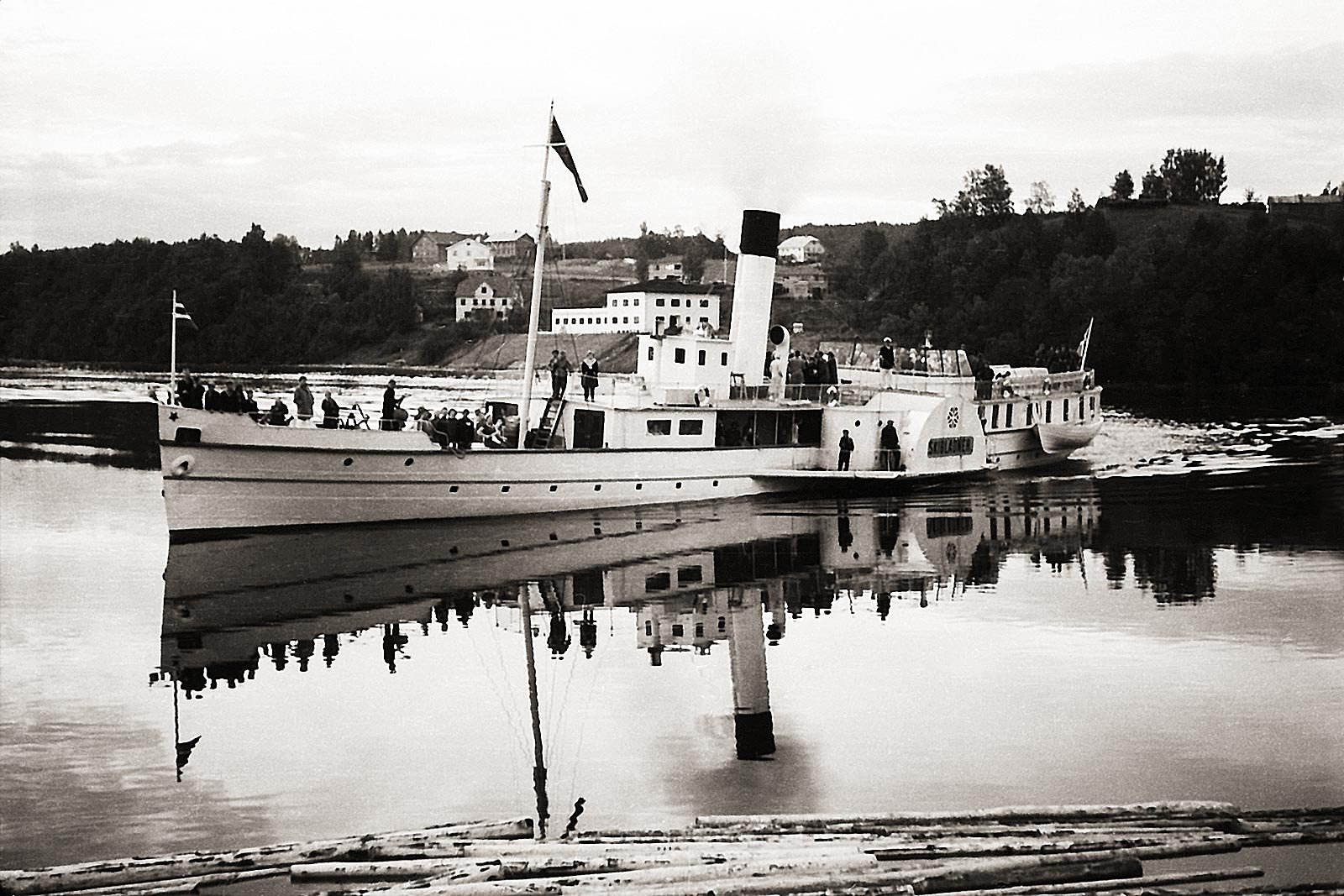
This is "Skibladner" on the river Vorma preparing to dock at the Eidsvoll train station. I took the picture the evening I left Eidsvoll after three years, when waiting for the northbound train.
"Skibladner" got its name from the ship of Frøy (also called Yngve), the god of fertility and prosperity. Skiðblaðnir can carry the whole bunch of gods over water and dry land and she always sails in a favourable wind. Afterwards she can be folded up and put in the pocket.
(1956-06-20)

Did you notice the lumber in the picture above? In 1956 it was still floated on rivers and here also on the lake Mjøsa. Paddle wheels and heavy logs make a bad combination, therefore a sailor with a boat hook was sometimes needed at both wheels.
Those times stray logs all over the lake and river would have been a problem a screw propeller would have solved. The two first patents of those were British and both came in 1837, and the first steamship with a screw propeller, SS "Archimedes", was built in London the next year. "Skibladner" was built in the middle of the transition time from paddle wheels to screw propellers, and the former was chosen. Which we appreciate. After all, "Skibladner" is now the world's oldest paddle wheel steamer in regular use.
(1956-06-18)

I vent to school for three years in Eidsvoll and in the spring of 1956 I took my exams that permitted me to join university studies. We were about a hundred students to finish school (Eidsvoll off. landsgymnas), and as the tradition has always been, and still is, we celebrated this event, especially on Constitution Day, May 17. "Skibladner" was 100 years old in 1956, and in our May 17. procession we had this crude model of the boat built on a tractor borrowed from a farmer. This picture is taken in Sundet, Eidsvoll – across the river Vorma from the railway station and Skibladner's main harbour those years. There were more elements in the procession, for example one about the shaky car bridges in Minnesund mentioned above.
(1956-05-17)
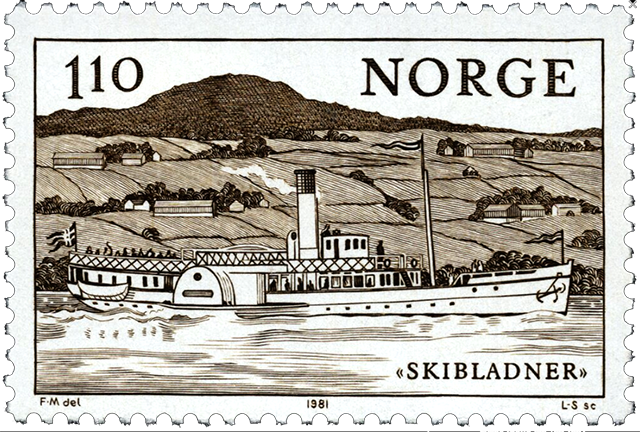
Skibladner (after 1888) depicted on a stamp issued 1981 for her 125 years anniversary.
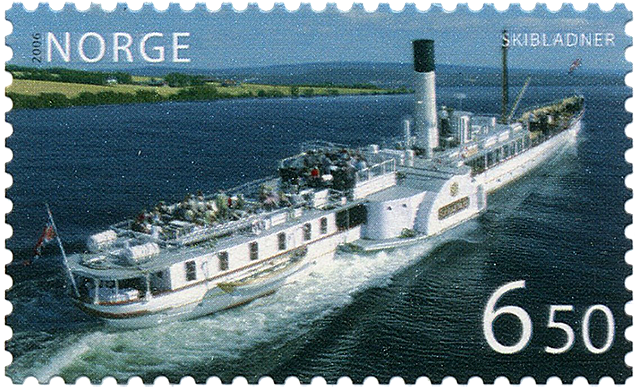
Skibladner depicted on a stamp issued 2006 for her 150 years anniversary.

Skibladner logo
